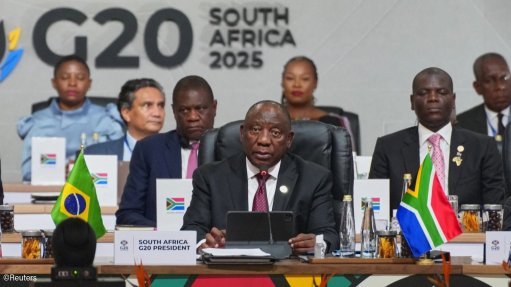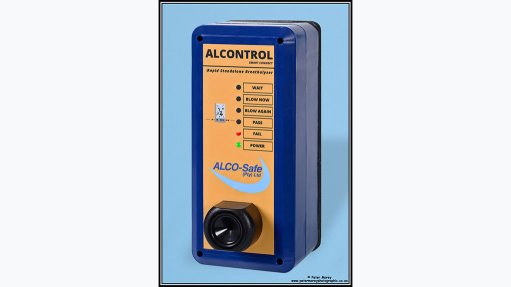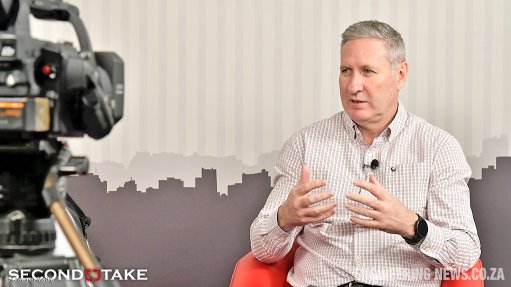Higher gold price ensures stable South African sector



DANIEL HOOIJER Depleted gold reserves in South Africa have produced a predicament for companies looking to find new orebodies
LONDON STOCK EXCHANGE The South African gold market's link to the London Stock Exchange remains beneficial
The record high gold price in rand terms has proven to be a stroke of luck for South African companies functioning within the global gold sector.
According to professional services firm KPMG gold commodity lead and partner Daniel Hooijer, the R600 000/kg price has lessened the blow of the low dollar gold price.
“By doing so, companies in South Africa which operate on a rand cost base have not experienced the same volatility as companies that produce according to the dollar cost base,” he states.
However, Hooijer states that, while the gold price currently remains stable, the local municipal elections and other political influences, along with the deteriorating rand, could lead to a disruption in supply as well as hinder mining activities, decreasing gold production.
Another factor that currently remains beneficial for South African producers, setting them apart from other gold producers across Africa, is their access to the available infrastructure, including modern refineries, efficient transport systems and through Rand Refinery, the only London Bullion Market Association-accredited refinery in Africa, as well as advanced technologies making mining operations, especially at deep levels, safe for miners.
“We have several positives in the gold industry in South Africa, but these are often met with sizable challenges,” Hooijer avers.
He states that, while the South African gold mining sector is ahead of its peers in terms of infrastructure and technology, depleted reserves have produced a predicament for companies looking to find new orebodies.
“The replenishing of reserve basins at the country’s gold mines could stand to be a possible challenge as it is more expensive for companies to mine deeper. “The Witwatersrand basin, for one, has had all ‘easy gold’ extracted, with companies having to look deeper to extract material. The depleted reserves and the cost of replacing these is increasing and the effects of ageing infrastructure are becoming more pronounced.”
Further, although South Africa’s infrastructure is more advanced than other African countries, Hooijer stresses that the erratic supply of power to mining operations is a thorn in the side of many mining companies.
“An integral part of mining is having electricity and the cost of electricity has become problematic in South Africa, to such an extent that the rise in power tariffs has necessitated mines to look at ways in which they can produce their own megawatts.”
Water also remains a quagmire for some mining companies, as South Africa is home to more deep-level mines, where water use remains cardinal to operations. Hooijer explains that water, which is used in extracting minerals, also has to be pumped out of the mine and purified, adding to the overall capital expenditure of an operation.
“South African mines are mainly deeper level and are perceived to have much higher costs than openpit or shallower mines. Some miners are able to beat the market perception, although they are in the minority. Mines, however, need to be a lot more cost effective to ensure profits amid the high cost of the market,” he adds.
While labour complications have also become contentious issues within the local gold sector, Hooijer believes that perspective is needed, as many countries have been subject to workforce unrest.
“Labour unrest is not unique to South Africa. It is a global phenomenon. Local mines have to remain invested in the neighbouring communities, ensuring that they also share in the wealth of the ore extracted.”
Hooijer adds that the labour force needs to understand its role in combating rising mining costs, steadying gold production, and generating value for the local communities, other stakeholders and small businesses built up around mining activities.
He highlights that the South African labour force has significant impacts on the longevity of mines and that the importance of labour stability cannot be overemphasised.
“Where employee and employer are working towards the same goal, production, liquidity and profitability levels are at their most efficient. This, in turn, increases commodity supply and sales which, in a high-demand industry, can only be positive for all.”
Mining Mechanisation
Hooijer notes that, while technological advancements in mining have become more prominent in recent years, the South African gold mining sector presents an anomaly, adding that cybersecurity may be the biggest security risk for mines, considering the introduction of automated mining solutions.
“The benefits of using technology in mining operations is evident, but the automation of machinery and the safety aspect around that will be jeopardised should these operations not be protected adequately. When peoples’ lives are at stake, especially in a deep-level mining scenario, system failure can become much more grave.”
He adds that the overriding risk factor remains something to consider, especially in South Africa, where the current production model is based on labour. While the labour model might become more dated as technology advances, Hooijer believes that labour will always remain a priority for South African mining operations as it carries political weight.
“In deeper-level mines, seismicity, morphology of reefs and temperature control are factors to consider when choosing which mining methods to use – all impact on safety and mining costs. Mechanisation has certain advantages regarding safety but there are currently some jobs that can only be done by workers. From that perspective, looking at South Africa and the technology available, workers will still be needed for most activities at the ore face.”
Article Enquiry
Email Article
Save Article
Feedback
To advertise email advertising@creamermedia.co.za or click here
Comments
Announcements
What's On
Subscribe to improve your user experience...
Option 1 (equivalent of R125 a month):
Receive a weekly copy of Creamer Media's Engineering News & Mining Weekly magazine
(print copy for those in South Africa and e-magazine for those outside of South Africa)
Receive daily email newsletters
Access to full search results
Access archive of magazine back copies
Access to Projects in Progress
Access to ONE Research Report of your choice in PDF format
Option 2 (equivalent of R375 a month):
All benefits from Option 1
PLUS
Access to Creamer Media's Research Channel Africa for ALL Research Reports, in PDF format, on various industrial and mining sectors
including Electricity; Water; Energy Transition; Hydrogen; Roads, Rail and Ports; Coal; Gold; Platinum; Battery Metals; etc.
Already a subscriber?
Forgotten your password?
Receive weekly copy of Creamer Media's Engineering News & Mining Weekly magazine (print copy for those in South Africa and e-magazine for those outside of South Africa)
➕
Recieve daily email newsletters
➕
Access to full search results
➕
Access archive of magazine back copies
➕
Access to Projects in Progress
➕
Access to ONE Research Report of your choice in PDF format
RESEARCH CHANNEL AFRICA
R4500 (equivalent of R375 a month)
SUBSCRIBEAll benefits from Option 1
➕
Access to Creamer Media's Research Channel Africa for ALL Research Reports on various industrial and mining sectors, in PDF format, including on:
Electricity
➕
Water
➕
Energy Transition
➕
Hydrogen
➕
Roads, Rail and Ports
➕
Coal
➕
Gold
➕
Platinum
➕
Battery Metals
➕
etc.
Receive all benefits from Option 1 or Option 2 delivered to numerous people at your company
➕
Multiple User names and Passwords for simultaneous log-ins
➕
Intranet integration access to all in your organisation



















